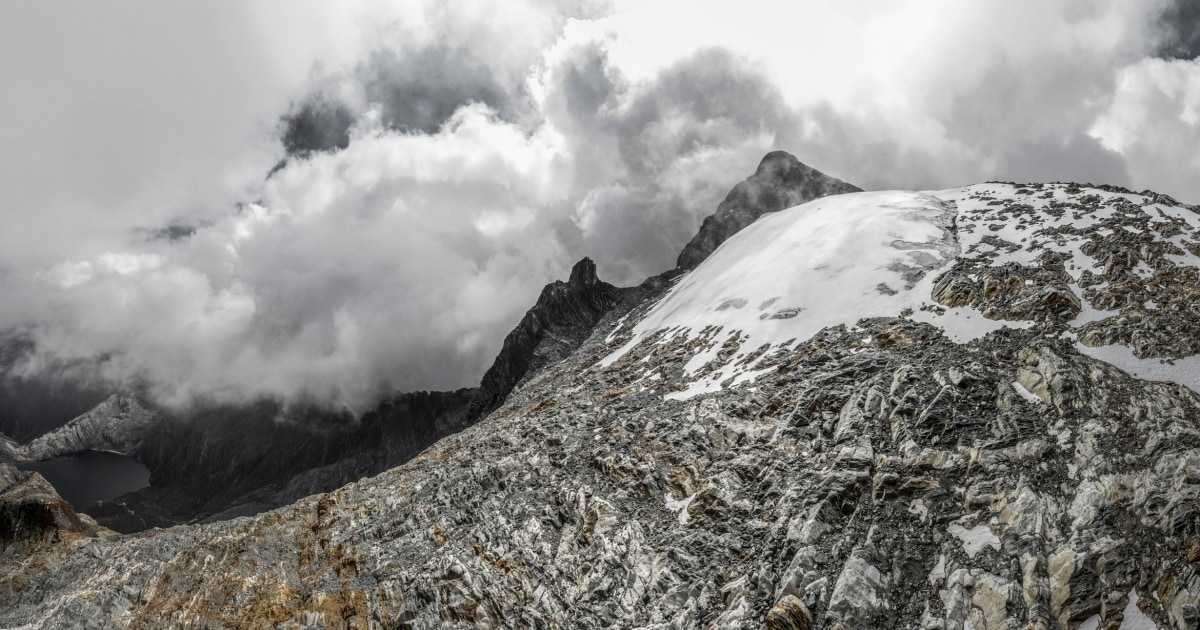Scientists explain the loss of the Humboldt Glacier, the last in the Sierra Nevada, which they believe makes the South American country the first in modern history to lose all its glaciers.
May 25, 2024, 5:00 AM MDT By Albinson Linares, Noticias Telemundo
For the people of the Venezuelan state of Mérida, the glaciated peaks of its Sierra Nevada have been a source of pride since time immemorial: The mountains are part of the regional identity and the origin of various legends in the area that relate them to mythical white eagles.
However, none of the six glaciers that crowned the mountains remain.
The International Climate and Cryosphere Initiative (ICCI), a science advocacy organization, recently declared that the Humboldt Glacier — also known as La Corona, or “the crown” in Spanish — is already "too small to be classified as a glacier.” In March, Venezuelan scientists had warned that the glacier had dramatically shrunk.
"Our tropical glaciers began to disappear since the '70s and their absence is felt. It is a great sadness and the only thing we can do is use their legacy to show children how beautiful our Sierra Nevada was,” Alejandra Melfo, an astrophysicist at the Universidad de los Andes in Mérida, said in an interview with Noticias Telemundo.
Venezuela had six glaciers in the Sierra Nevada, located about 16,000 feet above sea level. By 2011, five had already disappeared, but the Humboldt Glacier located near the second highest mountain in the country, Humboldt Peak, resisted the onslaught of the weather. Scientists believe its disappearance makes Venezuela the first country in the Americas — and the first country in modern history — to lose all its glaciers.
A deeply frightening, frustrating, concerning event that was also predictable, preventable, and secondary to PROFITS.
“This is good for B̶i̶t̶c̶o̶i̶n̶ AI”
Straight out of opening sequence of a post-apocalyptic movie.
This is the best summary I could come up with:
For the people of the Venezuelan state of Mérida, the glaciated peaks of its Sierra Nevada have been a source of pride since time immemorial: The mountains are part of the regional identity and the origin of various legends in the area that relate them to mythical white eagles.
It is a great sadness and the only thing we can do is use their legacy to show children how beautiful our Sierra Nevada was,” Alejandra Melfo, an astrophysicist at the Universidad de los Andes in Mérida, said in an interview with Noticias Telemundo.
According to the United States Geological Survey (USGS), they typically exist where average annual temperatures reach near-freezing levels and winter precipitation causes significant accumulations of snow.
With the increase in global temperatures due to climate change, the melting of large ice masses is a continuous phenomenon that, among other things, contributes to raising sea levels around the world.
“Although the end of the glacier was something that was going to happen due to the cycle we are experiencing, there is no doubt that global warming, a product of greenhouse gases, has of course accelerated the disappearance process,” Bezada said.
The Andes region — a mountain range running through parts of Argentina, Bolivia, Chile, Colombia, Ecuador, Peru and Venezuela — has seen a temperature rise of at least 0.10 degrees Celsius over the past seven decades.
The original article contains 1,151 words, the summary contains 225 words. Saved 80%. I’m a bot and I’m open source!




